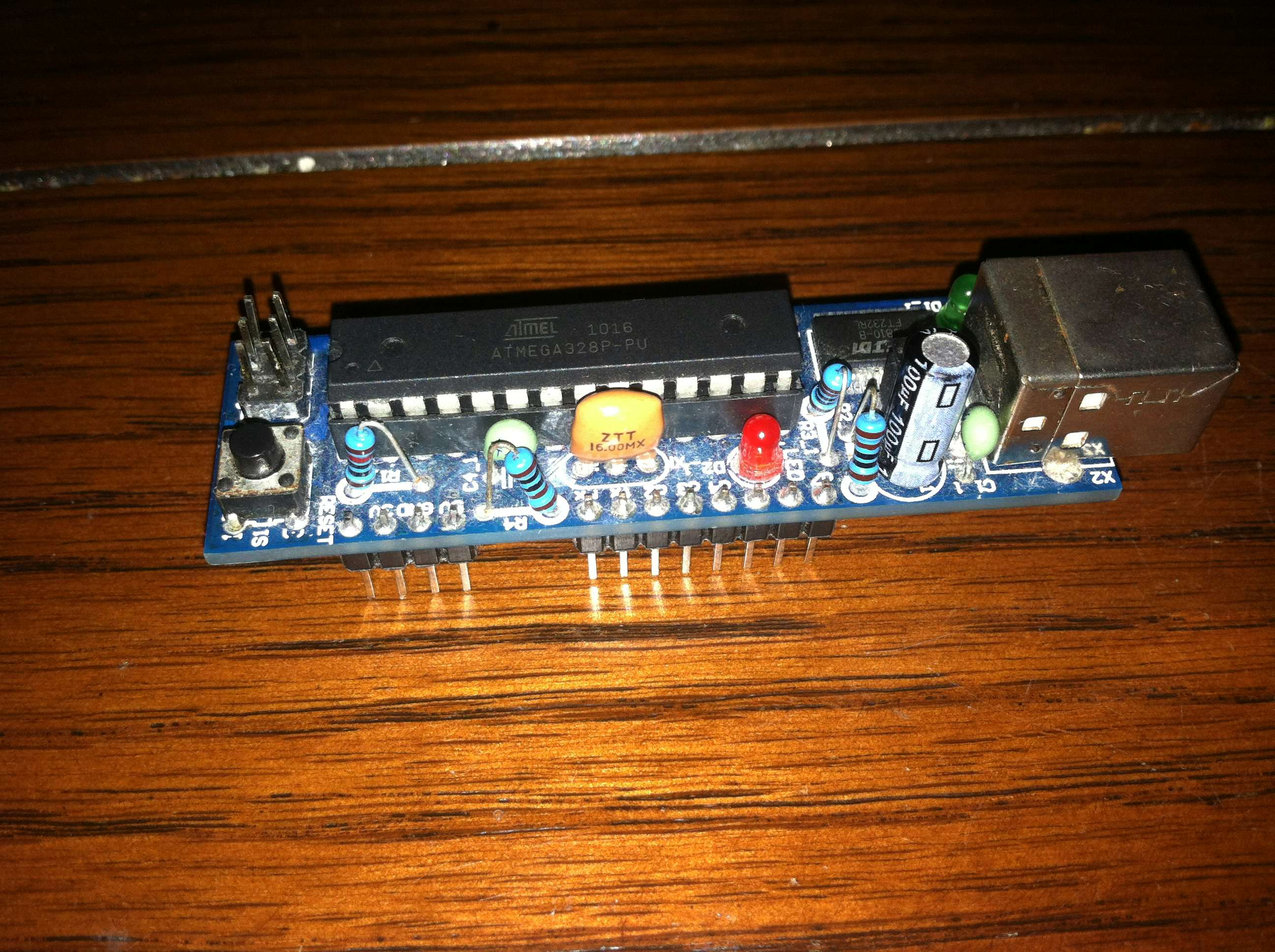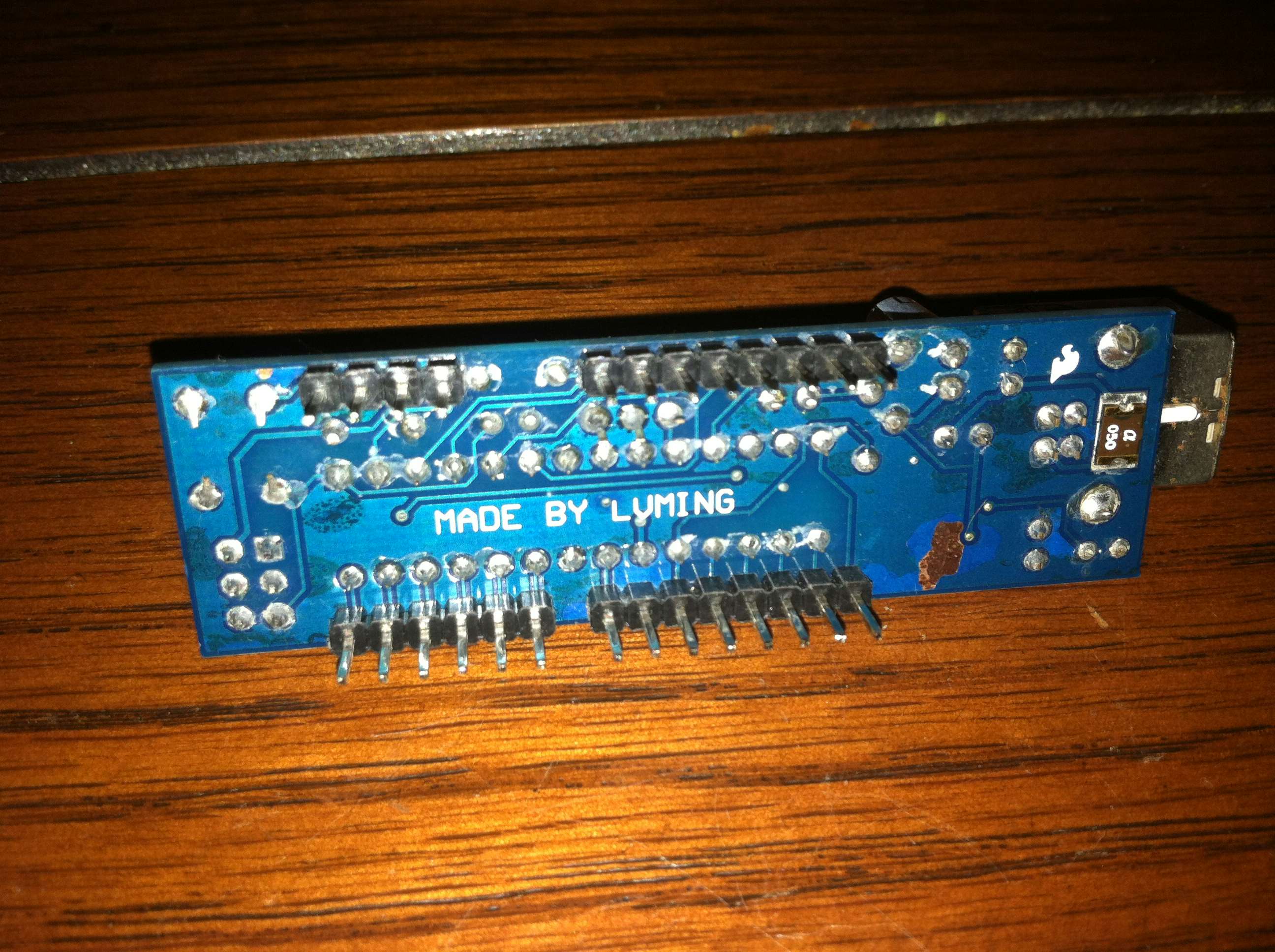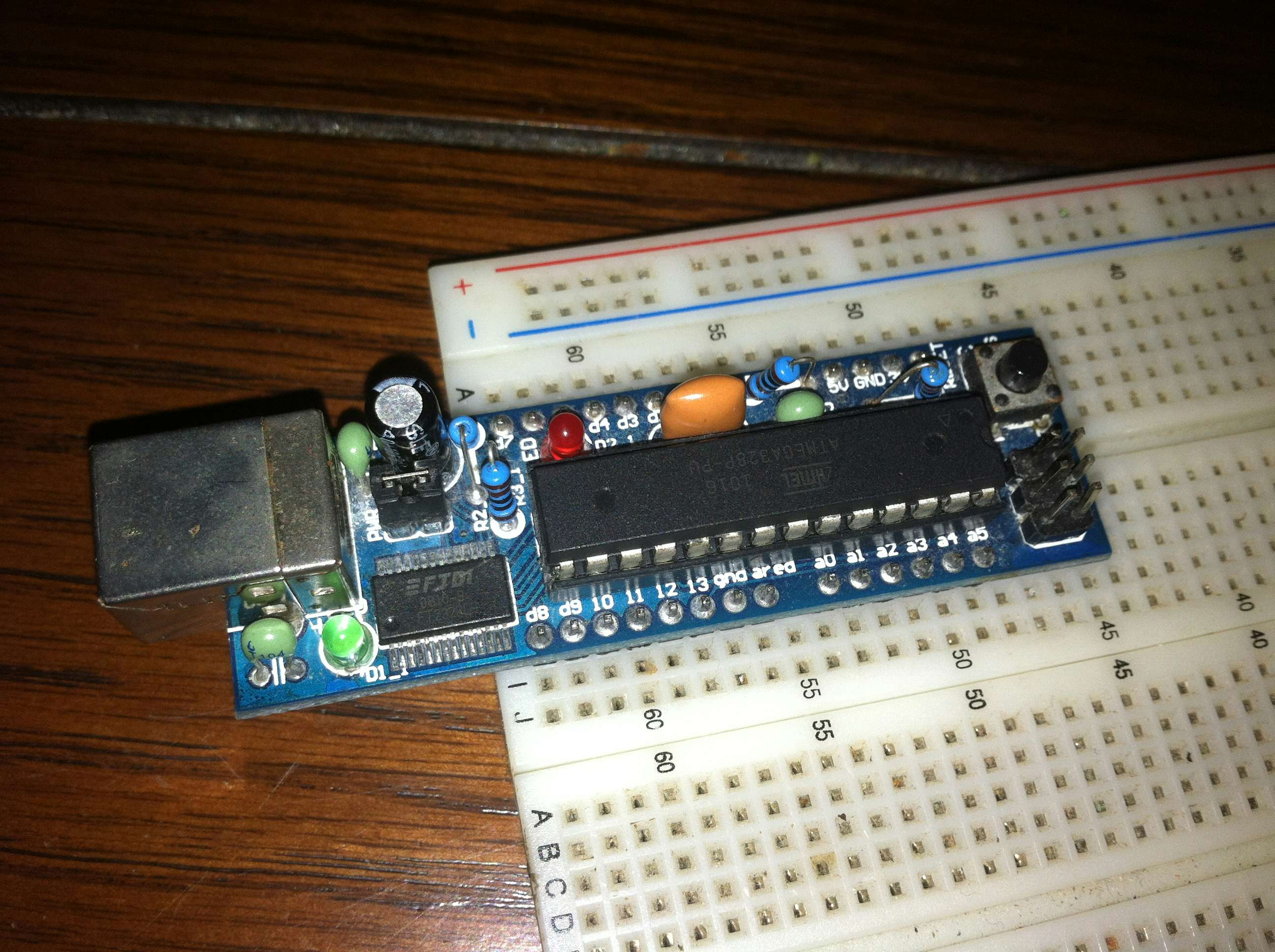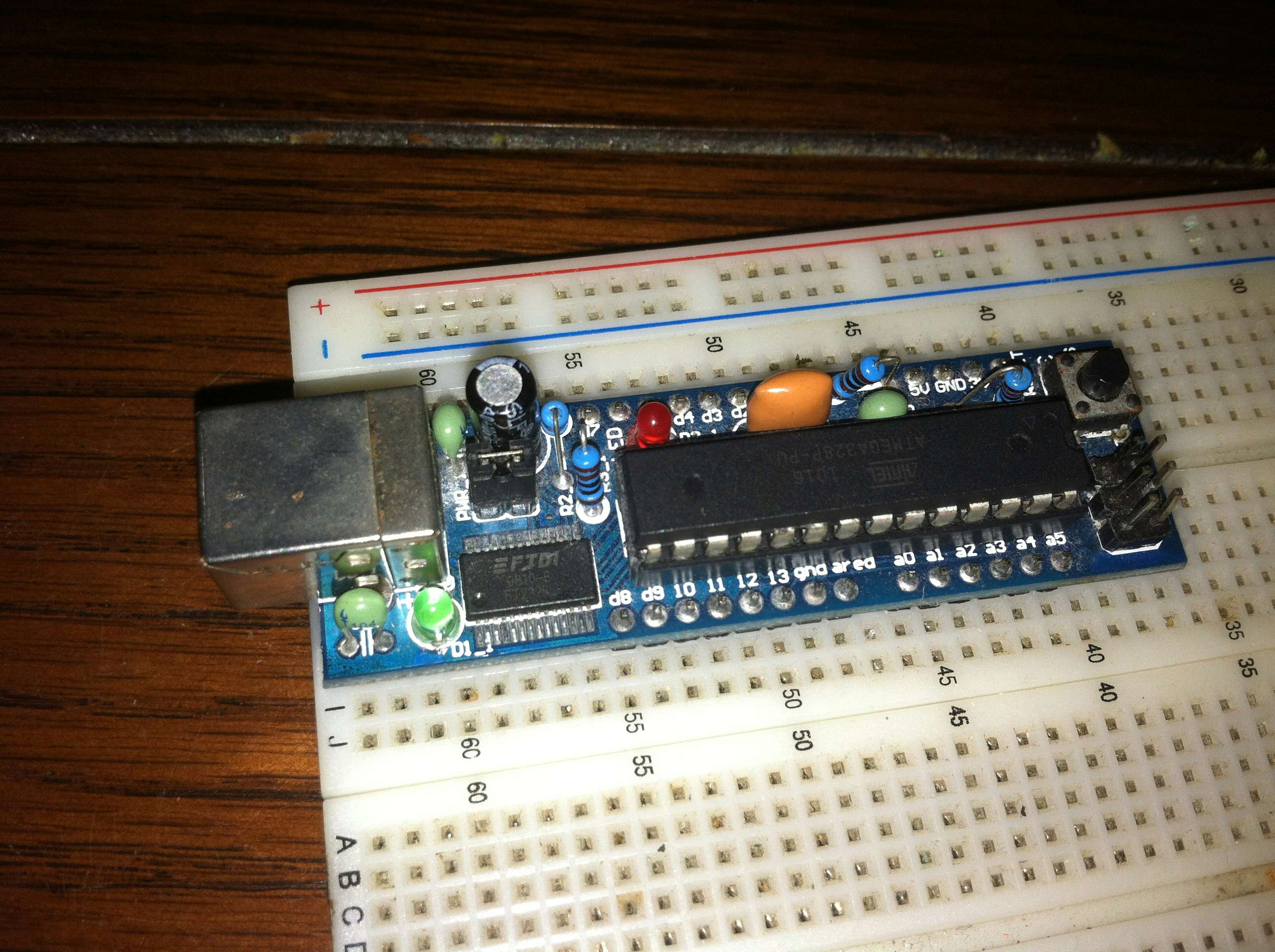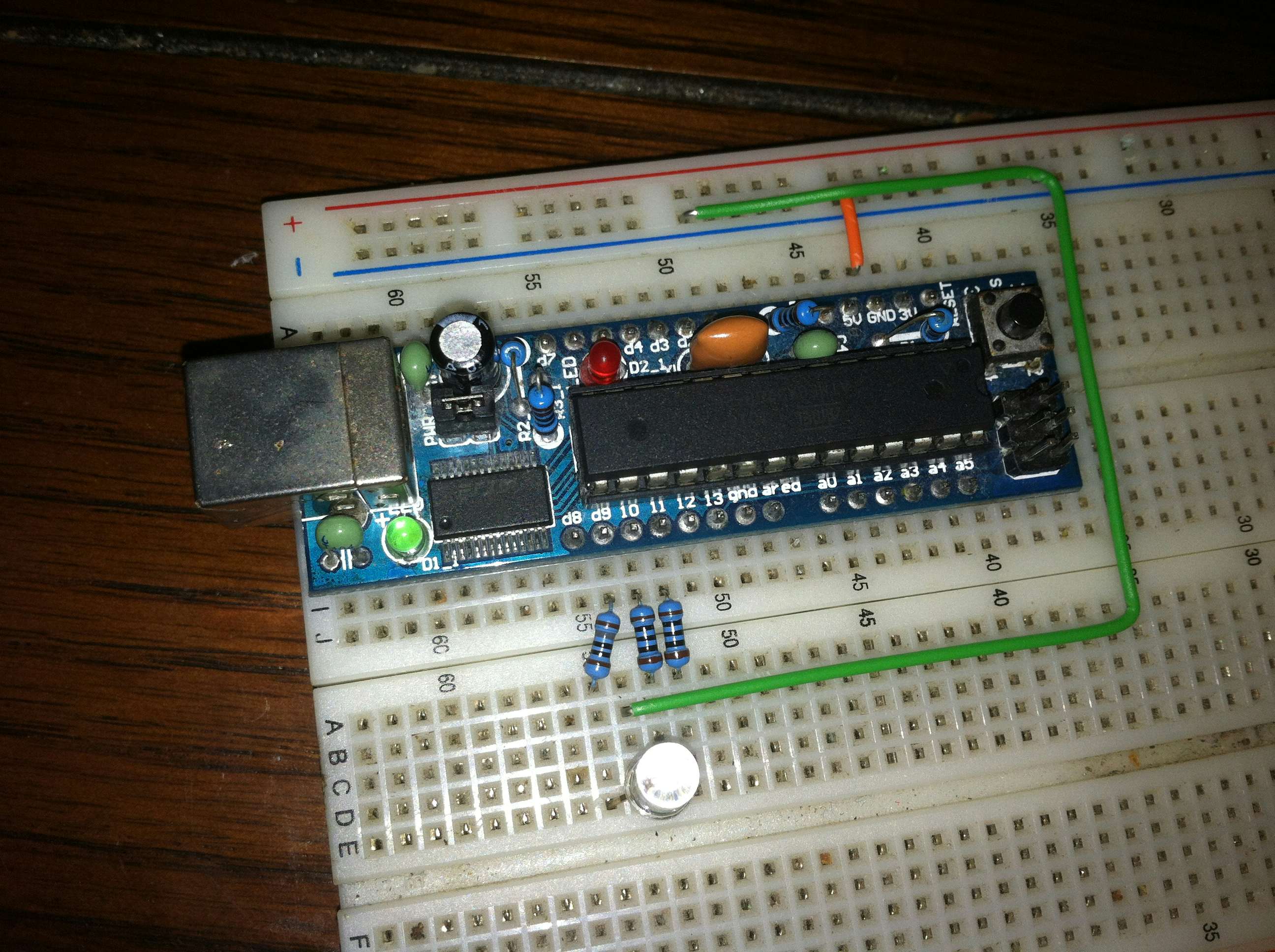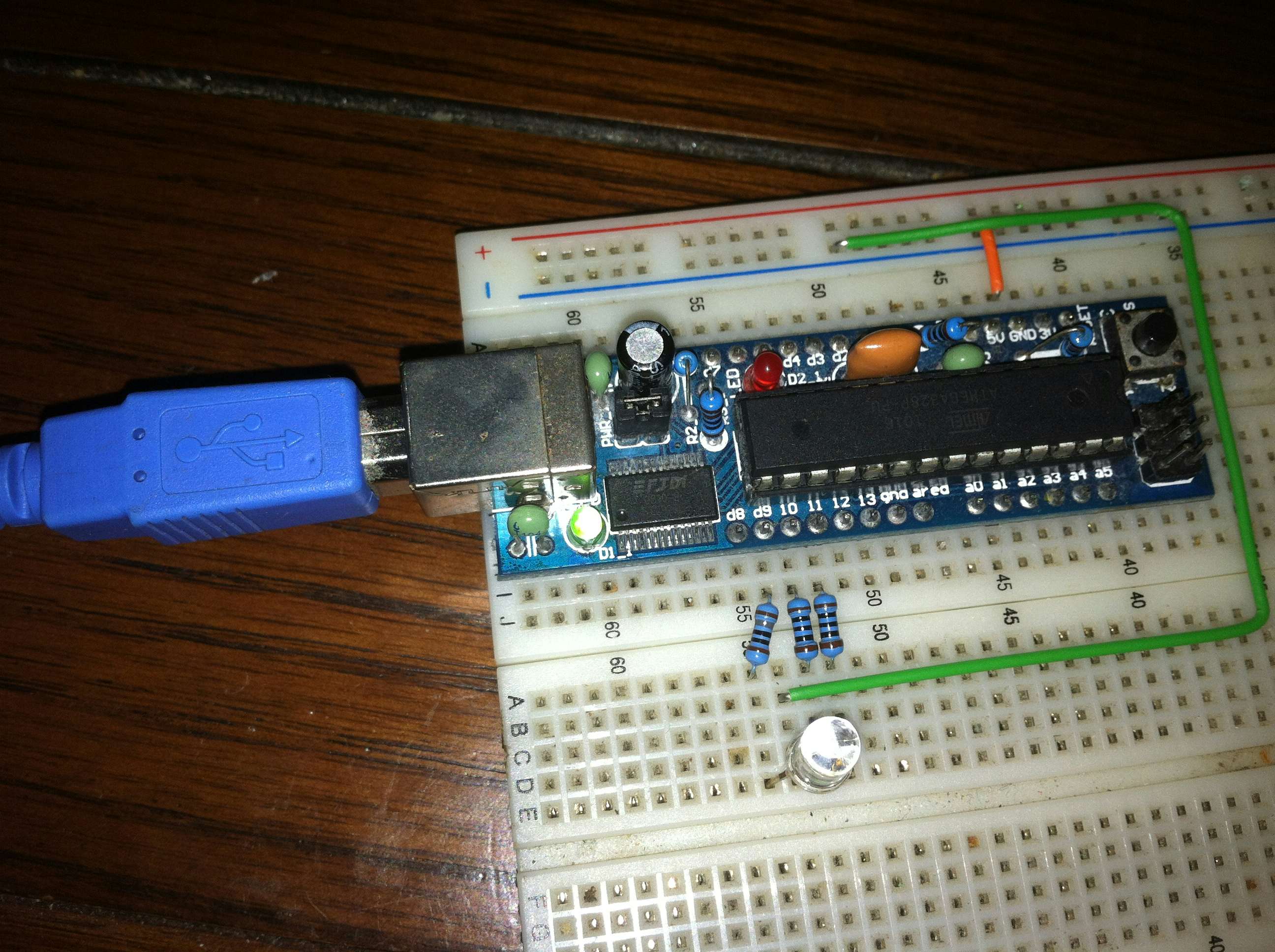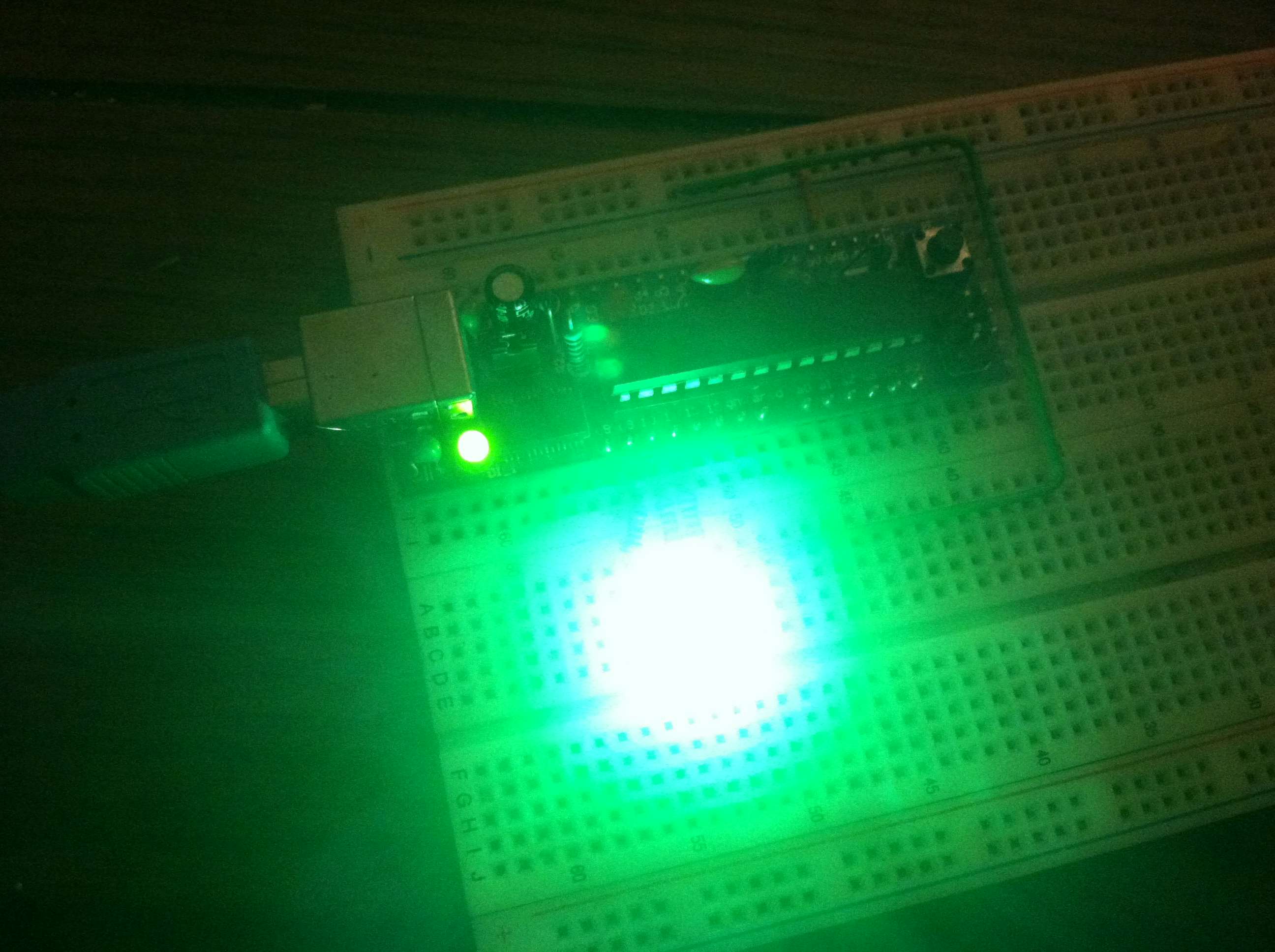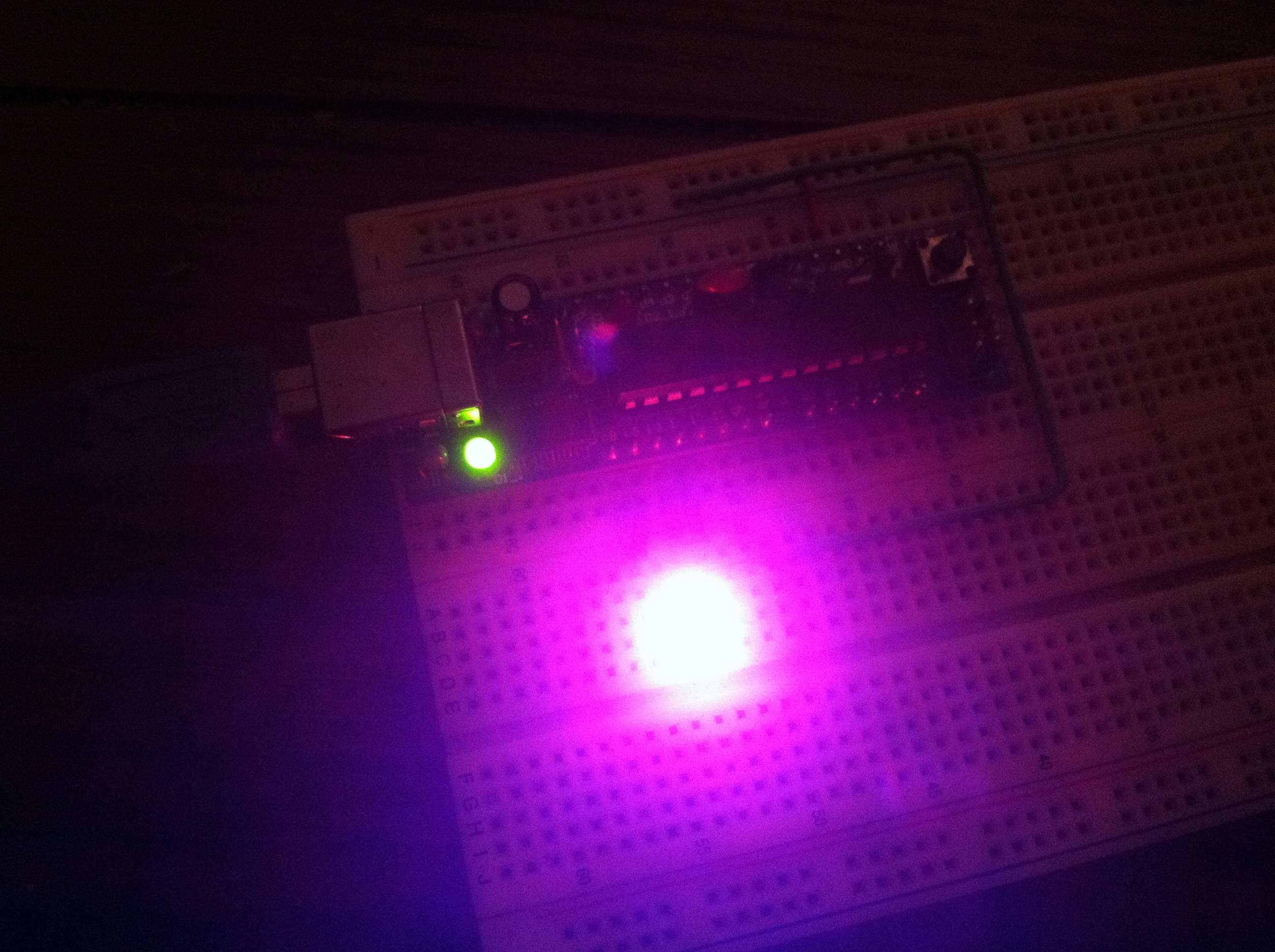Description
Introduction
The Boarduino is any prototyper’s dream plugging directly into any breadboard and providing all the same capabilities as the regular Arduino. The one downside being that shields designed for the Arduino will not plug directly into the Boarduino, however most shields are offered in a format that is also breadboard-friendly.
Where to Buy
The Boarduino is not an officially named product that any one place sells, there are several variations all based on the original design sold by Adafruit in both DC and USB versions.
Meet the Boarduino
My Boarduino was purchased from an eBay store that appears to no longer stock them however it is functionally identical to the current Boarduino offered by adafruit.com with the exception of the USB-B port being swapped for a USB-Mini port.
The Boarduino can be used by itself without plugging into a breadboard, in fact one could solder wires directly to the pins on the bottom and build a dead-bug style circuit. The most functionality however is gained by plugging the Boarduino into a breadboard.
Once inserted into the breadboard you can elect to either allow the extra bit of the board without pins to poke off the side of your breadboard. The advantage is saving about 10 rows or 50 total connections by doing so, the disadvantage is it makes your breadboard less portable and the electronics underneath the Boarduino more susceptible to damage. I routinely use a breadboard as both a prototyping platform and as a way to demonstrate circuits to others.
Here I have setup one of the Arduino example circuits for using one of their provided sample sketches (as Arduino programs are called) such as the LED Blink or RGB Fade. The pins are labelled on this Boarduino, just check the one you are thinking of buying.
